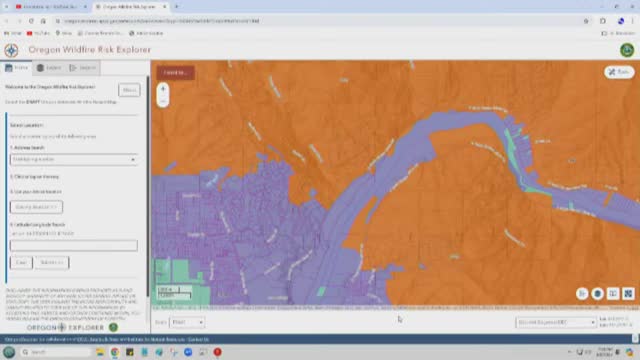Curry County leaders push for wildfire emergency declaration
September 09, 2024 | Brookings, Curry County, Oregon
This article was created by AI summarizing key points discussed. AI makes mistakes, so for full details and context, please refer to the video of the full meeting. Please report any errors so we can fix them. Report an error »

In a recent government meeting, officials from Curry County addressed pressing concerns regarding wildfire risk assessments and the implications for local communities. The discussions highlighted the need for a unified approach to tackle what was described as a \"Curry County problem,\" emphasizing collaboration among various local leadership entities.
A significant point of contention was the integrity of a wildfire risk map that identified only urban areas from Eugene to Portland as low-risk, while the majority of the county was marked at risk. Officials expressed skepticism about the criteria used to develop the map, which included climate, weather, vegetation, and topography, arguing that historical fire data should have played a more prominent role in the assessment. Notably, it was mentioned that the last major coastal fire occurred in 1930, raising questions about the current risk levels assigned to certain areas.
The meeting also touched on the financial burdens placed on residents due to insurance penalties linked to the risk assessments. Officials indicated that until the map is codified into law—expected by the end of the month—there would be limited capacity to take action. They proposed an emergency declaration to address mismanagement of federal and state lands, advocating for measures such as thinning forests and improving access roads to mitigate wildfire risks effectively.
Additionally, it was noted that there is currently no designated state agency overseeing the risk assessment process, which has been contracted out to Oregon State University in collaboration with various federal and state entities. Local officials are now tasked with implementing building and planning codes based on the forthcoming regulations.
The meeting concluded with a call for residents affected by the risk assessments to reach out to local offices to compile data on the negative impacts they face, ensuring that community concerns are documented and addressed moving forward.
A significant point of contention was the integrity of a wildfire risk map that identified only urban areas from Eugene to Portland as low-risk, while the majority of the county was marked at risk. Officials expressed skepticism about the criteria used to develop the map, which included climate, weather, vegetation, and topography, arguing that historical fire data should have played a more prominent role in the assessment. Notably, it was mentioned that the last major coastal fire occurred in 1930, raising questions about the current risk levels assigned to certain areas.
The meeting also touched on the financial burdens placed on residents due to insurance penalties linked to the risk assessments. Officials indicated that until the map is codified into law—expected by the end of the month—there would be limited capacity to take action. They proposed an emergency declaration to address mismanagement of federal and state lands, advocating for measures such as thinning forests and improving access roads to mitigate wildfire risks effectively.
Additionally, it was noted that there is currently no designated state agency overseeing the risk assessment process, which has been contracted out to Oregon State University in collaboration with various federal and state entities. Local officials are now tasked with implementing building and planning codes based on the forthcoming regulations.
The meeting concluded with a call for residents affected by the risk assessments to reach out to local offices to compile data on the negative impacts they face, ensuring that community concerns are documented and addressed moving forward.
View full meeting
This article is based on a recent meeting—watch the full video and explore the complete transcript for deeper insights into the discussion.
View full meeting
